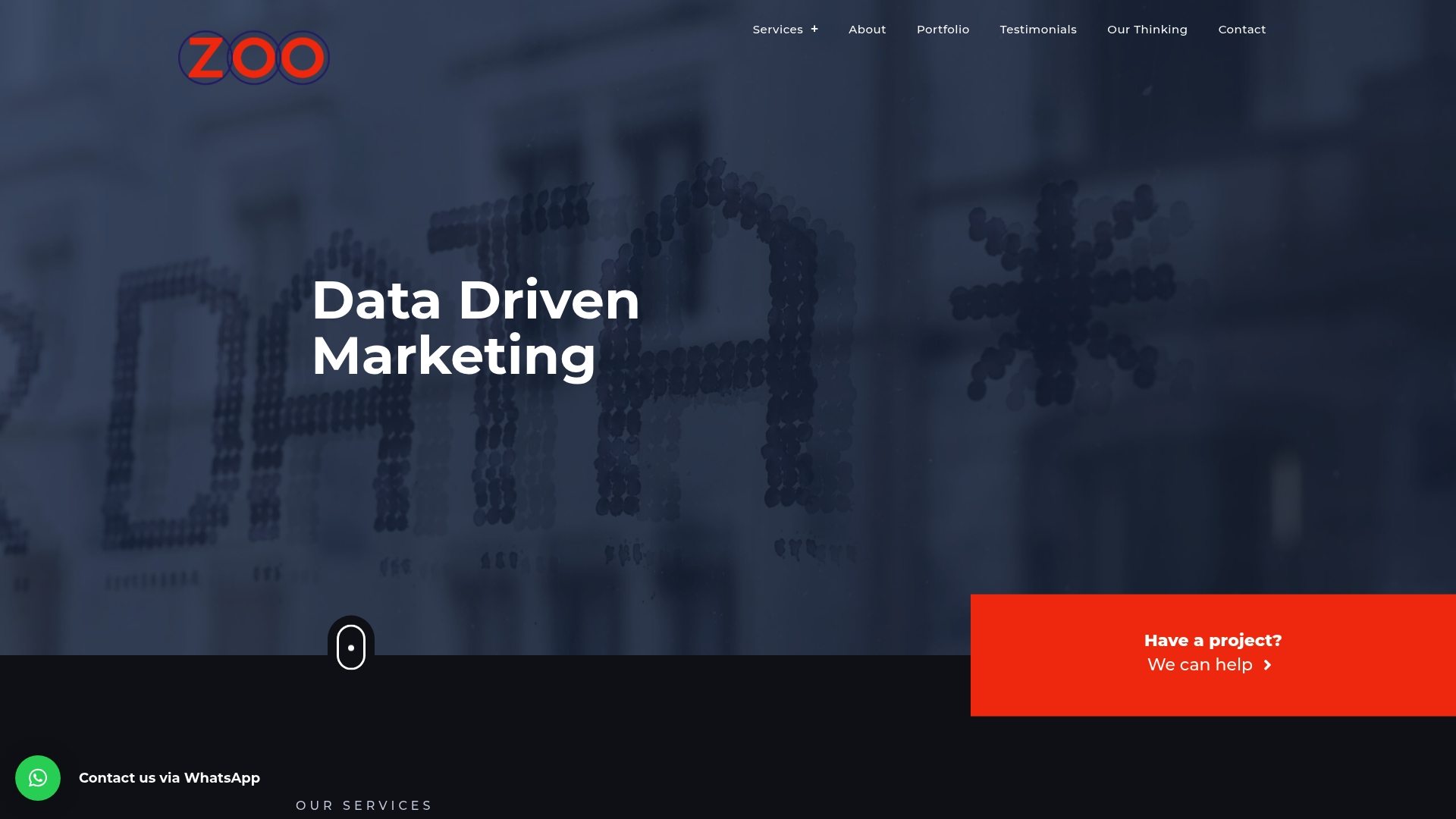Did you know that over 70 percent of customers are more likely to share feedback if asked directly after a purchase? In a world where every review and comment can shape your reputation, small businesses need smart ways to gather and use customer insights. Simple strategies such as surveys, social listening, and real-time engagement now give owners a clear path to strengthen relationships and make better decisions fueled by real feedback.
Table of Contents
- 1. Start With Simple Surveys To Gather Quick Insights
- 2. Use Social Media Listening For Real-Time Feedback
- 3. Set Up Automated Review Requests After Purchases
- 4. Analyze Feedback Data For Key Improvement Areas
- 5. Engage Directly With Customers Using Chatbots
- 6. Incorporate Feedback Into Regular Team Meetings
- 7. Close The Loop By Responding And Acting Swiftly
Quick Summary
| Takeaway | Explanation |
|---|---|
| 1. Start with simple surveys. | Use surveys to gather quick insights from customers about their preferences and experiences. |
| 2. Utilize social media listening. | Monitor conversations online to gain real-time feedback on how customers perceive your brand. |
| 3. Automate review requests after purchases. | Set up automated emails or messages asking for feedback shortly after a purchase to maximize response rates. |
| 4. Analyze feedback data effectively. | Systematically categorize and review customer feedback to identify common themes and actionable insights. |
| 5. Engage customers with chatbots. | Implement chatbots for instant support and feedback collection, enhancing customer interaction and satisfaction. |
1. Start with Simple Surveys to Gather Quick Insights
Customer surveys are your secret weapon for understanding what your audience really thinks. They provide a direct line of communication between your small business and its customers, offering rapid insights that can transform your strategy.
According to research from Penn State University, surveys can be administered through multiple channels including mail, telephone, in-person, and online platforms. Each method comes with unique advantages that can help you collect targeted feedback.
Why Surveys Matter
Surveys are more than just questionnaires. They are strategic tools that help you uncover customer preferences, pain points, and potential improvements for your products or services. By asking the right questions, you can gain valuable intelligence about your target market.
The University of Wisconsin Economic Development Extension suggests four primary survey approaches:
- Mail surveys (cost effective)
- Telephone surveys (immediate interaction)
- Web-based surveys (quick and scalable)
- Intercept (face-to-face) surveys (personal engagement)
Practical Survey Implementation
Start small and keep your initial surveys brief. Focus on 5-7 clear, concise questions that provide actionable insights. Use a mix of multiple choice and open-ended questions to capture both quantitative and qualitative data.
Consider using free online tools like Google Forms or SurveyMonkey to create and distribute your surveys quickly. These platforms offer user-friendly interfaces and basic analytics to help you interpret results.
For deeper marketing insights, check out our guide on using marketing analytics to complement your survey findings and develop a more comprehensive understanding of your customer base.
2. Use Social Media Listening for Real-Time Feedback
Social media has transformed how businesses understand their customers. Social listening allows you to tap into real-time conversations and gather authentic feedback directly from your audience.
According to research from Coursera, social listening involves monitoring social media platforms to understand what customers are saying about your brand. This strategy goes beyond traditional market research by providing immediate, unfiltered insights into customer experiences and perceptions.
Why Social Listening Matters
Customers are constantly sharing opinions online. By actively monitoring these conversations, you can uncover valuable insights about your products, services, and overall brand reputation. Cornell University highlights that effective social listening enables businesses to proactively engage with customers and manage their online presence.
Practical Social Listening Strategies
Start by identifying key platforms where your target audience is most active. This might include:
- Twitter for quick customer service interactions
- Instagram for visual brand sentiment
- LinkedIn for professional feedback
- Facebook for community discussions
Tools and Implementation
Utilize free and paid social listening tools like Hootsuite, Sprout Social, or native platform analytics to track brand mentions. Set up alerts for your brand name, product keywords, and relevant industry terms.
Pay attention to both positive and negative mentions. Respond quickly to customer comments, demonstrating that you value their feedback and are committed to improving their experience.
For more comprehensive insights into maximizing your social media strategy, explore our guide on social media marketing to complement your social listening efforts.
3. Set Up Automated Review Requests After Purchases
Feedback is the lifeblood of business improvement. Automated review requests transform the way small businesses collect customer insights by making the feedback process seamless and straightforward.
Research from the AO Fund highlights that email remains a simple and direct method for gathering customer feedback. By strategically collecting contact information during purchases, you create a direct communication channel with your customers.
Why Automated Review Requests Work
Customers are more likely to provide feedback when the process is easy and timely. Automated review requests strike while the customer experience is fresh in their memory. This approach captures genuine reactions and provides actionable insights into your product or service performance.
The Massachusetts state government recommends systematic feedback collection as a powerful strategy for understanding and addressing customer experiences. For small businesses, this translates into an opportunity to continuously refine your offerings.
Implementing Automated Review Requests
Create a streamlined process that triggers an email or SMS request shortly after a customer makes a purchase:
- Send the review request within 24 to 48 hours of purchase
- Keep the survey short (3 to 5 questions maximum)
- Offer multiple response options (star ratings, multiple choice, open text)
- Provide an incentive like a discount on future purchases
Technical Implementation
Utilize customer relationship management (CRM) platforms or email marketing tools that support automated workflows. Many ecommerce platforms and email services offer built in review request features that can be easily configured.
Make your review request personal. Use the customer’s name and reference their specific purchase to increase engagement and response rates.
Pro Tips
Be transparent about how you will use the feedback. Customers appreciate knowing their input contributes to real improvements. Respond to reviews publicly when possible, showing that you value customer input.
To enhance your overall marketing and feedback strategies, explore our guide on online advertising for small businesses to complement your review collection efforts.
4. Analyze Feedback Data for Key Improvement Areas
Data transforms raw customer opinions into actionable business intelligence. Analyzing feedback systematically helps small businesses uncover hidden insights and prioritize meaningful improvements.
Research from Penn State University highlights that effective data analysis involves organizing responses to identify common themes and calculating key statistical metrics like averages and frequencies. This process turns scattered feedback into a clear roadmap for enhancement.
Why Data Analysis Matters
Customer feedback data is more than numbers on a spreadsheet. It represents real experiences and expectations that can drive strategic business decisions. By understanding patterns and trends, you can proactively address customer needs before they become significant problems.
The Massachusetts state government suggests that systematic feedback analysis enables organizations to pinpoint and resolve issues quickly. For small businesses, this means staying ahead of potential customer dissatisfaction.
Practical Data Analysis Strategies
Implement a structured approach to feedback analysis:
- Categorize feedback into themes (product quality, customer service, pricing)
- Use percentage distributions to identify most frequent issues
- Create visual representations like pie charts or graphs
- Track changes in feedback metrics over time
Tools and Techniques
Utilize free or low cost tools like Google Sheets, Excel, or specialized survey analysis platforms. These tools can help you quickly transform raw data into meaningful insights.
Focus on both quantitative (numerical ratings) and qualitative (written comments) data. Numerical scores provide quick snapshots while detailed comments offer deeper understanding.
To enhance your analytical capabilities and gain more comprehensive insights, explore our guide on analyzing website performance which can complement your feedback analysis strategy.
5. Engage Directly with Customers Using Chatbots
Chatbots represent a powerful communication tool that transforms how small businesses interact with customers. These intelligent messaging systems provide instant support and gather real time feedback without requiring significant human resources.
Research from the AO Fund highlights that direct communication builds personal relationships and encourages customers to share experiences proactively. Chatbots enable this interaction at scale, making every customer feel heard and valued.
Why Chatbots Matter
Customer engagement is no longer about waiting days for a response. Modern customers expect immediate answers and personalized interactions. Chatbots bridge this gap by providing instant communication channels that feel responsive and intelligent.
The Massachusetts state government recommends systematic feedback collection as a strategy for understanding customer experiences. Chatbots excel at this by capturing immediate impressions and sentiment during customer interactions.
Strategic Chatbot Implementation
Design your chatbot with clear objectives and customer experience in mind:
- Program basic troubleshooting responses
- Create pathways for escalating complex issues
- Include options for human agent handover
- Develop conversational scripts that sound natural
Technical Considerations
Start with platforms that integrate easily with your existing communication channels. Many customer relationship management systems now offer chatbot functionalities that require minimal technical expertise.
Focus on creating conversational flows that feel human and helpful. The goal is not to replace human interaction but to enhance and streamline customer communication.
To maximize your customer engagement strategy, explore our WhatsApp bot services which can provide additional insights into automated customer communication techniques.
6. Incorporate Feedback into Regular Team Meetings
Feedback is not just data. It is the compass that guides your business toward continuous improvement. Regular team discussions transform customer insights into actionable strategies that can revolutionize your small business.
Research from the Massachusetts state government emphasizes that systematically discussing feedback helps organizations identify and address problems proactively. Penn State University further highlights that survey findings can significantly inform business decision making when properly integrated into team conversations.
Why Team Feedback Discussions Matter
Customer feedback provides a direct window into your business performance. By making feedback a consistent agenda item in team meetings, you create a culture of transparency and continuous learning. This approach ensures that every team member understands customer perspectives and contributes to solution development.
Implementing Feedback Discussion Strategies
Create a structured approach to incorporating customer insights:
- Dedicate a specific segment of each team meeting to feedback review
- Rotate responsibility for presenting feedback insights
- Encourage open discussion and collaborative problem solving
- Track action items and follow up on previous meeting resolutions
Practical Implementation Techniques
Prepare a standardized feedback summary template that highlights key themes:
- Top positive comments
- Critical improvement areas
- Potential solutions proposed by customers
- Trends compared to previous reporting periods
Make these discussions engaging by treating feedback as a collaborative opportunity rather than a critique. Celebrate wins highlighted by customer comments and approach challenges with a solutions oriented mindset.
To enhance your team engagement and performance tracking, explore our guide on increasing business engagement which can provide additional strategies for team collaboration and communication.
7. Close the Loop by Responding and Acting Swiftly
Customer feedback is a gift. Responding quickly and demonstrating that you genuinely value customer input can transform casual customers into loyal brand advocates.
According to the AO Fund, responding to customer feedback by making tangible improvements shows businesses truly value their customers. The Massachusetts state government further emphasizes that prompt action on feedback leads to more effective issue resolution and enhanced user experiences.
Why Swift Response Matters
Customers want to feel heard. When they take time to provide feedback, they expect more than just a generic acknowledgment. They want to see real changes that address their concerns and improve their experience.
Effective Response Strategies
Create a structured approach to closing the feedback loop:
- Acknowledge feedback within 24 to 48 hours
- Communicate specific actions you will take
- Follow up after implementing changes
- Show appreciation for customer input
Practical Implementation Techniques
Develop a response framework that feels personal and genuine. This means moving beyond templated responses to provide meaningful communication that demonstrates you are listening and care about customer experiences.
Consider creating a public facing dashboard or communication channel where customers can see how their feedback has influenced business decisions. Transparency builds trust and shows your commitment to continuous improvement.
To enhance your overall customer engagement strategy and communication approaches, explore our guide on increasing business engagement which can provide additional insights into building stronger customer relationships.
Below is a comprehensive table summarizing the key strategies and methodologies for collecting and utilizing customer feedback as discussed in the article.
| Strategy | Implementation | Benefits/Outcomes |
|---|---|---|
| Simple Surveys | Use online tools (Google Forms, SurveyMonkey) for short, concise surveys. | Quick insights into customer preferences and improvements. |
| Social Media Listening | Monitor platforms like Twitter, Instagram, and Facebook using tools like Hootsuite. | Real-time, unfiltered customer feedback and engagement. |
| Automated Review Requests | Trigger feedback requests post-purchase via email/SMS. | Timely capture of genuine customer reactions. |
| Feedback Data Analysis | Use Google Sheets or Excel to categorize and analyse feedback. | Identifies key improvement areas and trends. |
| Engage with Chatbots | Implement chatbots for instant customer interaction and support. | Enhances customer experience with quick responses. |
| Team Feedback Discussions | Include feedback review in regular meetings, rotate who presents insights. | Creates a culture of transparency and continuous improvement. |
| Swift Response | Acknowledge feedback promptly and demonstrate actions taken. | Builds customer trust and loyalty through visible improvements. |
Transform Your Customer Feedback Into Real Growth With Expert Digital Support
Collecting and analysing customer insights can often feel overwhelming for small businesses eager to improve but unsure where to begin. This article highlights the challenges of gathering honest, timely, and actionable feedback through surveys, social listening, automated reviews, and chatbots — all essential for sharpening your competitive edge. Many businesses struggle with turning raw data into clear strategies or responding swiftly enough to close the feedback loop meaningfully.
At Zoo Digital we specialise in helping small enterprises not only capture valuable feedback but also activate it through powerful data driven marketing solutions. With expert support in setting up tracking, automation via WhatsApp bots, and CRM management you can engage customers personally and improve responsiveness — exactly what the article emphasises. Our holistic services, including web development and SEO, ensure your online presence attracts the right audience and converts insight into loyalty.
Unlock the full potential of your feedback strategies today with Uncategorized Archives – Zoo Digital tailored marketing tools designed for your unique business needs.

Ready to transform your customer conversations into business growth Take the next step now by exploring how Zoo Digital can help you automate feedback collection, analyse data effectively and respond quickly Visit us at Zoo Digital to start building stronger customer relationships that drive success.
Frequently Asked Questions
What are the simplest ways to gather customer feedback for my small business?
Customer feedback can be gathered effectively through simple surveys, social media listening, and automated review requests. Start with brief surveys of 5-7 questions to get actionable insights from your customers.
How can social media listening enhance my understanding of customer opinions?
Social media listening allows you to monitor real-time conversations about your brand, providing immediate and authentic feedback. Set up alerts for your brand name and keywords to track mentions and engage with customers promptly.
What steps can I take to implement automated review requests after purchases?
To implement automated review requests, create a process that sends an email or SMS within 24-48 hours after a purchase, asking customers to provide feedback. Ensure the request is short, containing just 3-5 questions, and consider offering incentives to encourage responses.
How do I analyze customer feedback data effectively?
Analyze customer feedback by organizing responses into key themes and using statistical metrics to identify trends. Focus on common issues and create visual representations like graphs to easily communicate findings to your team.
Why is it important to respond to customer feedback quickly, and how should I do it?
Responding quickly to customer feedback shows that you value their input, which can enhance customer loyalty. Acknowledge feedback within 24-48 hours and communicate specific actions you plan to take based on their responses.
How often should I incorporate customer feedback discussions in team meetings?
Incorporate customer feedback discussions during each team meeting to ensure all members are aware of customer perspectives and can contribute to solutions. Dedicate a specific segment to review feedback trends and action items regularly.

